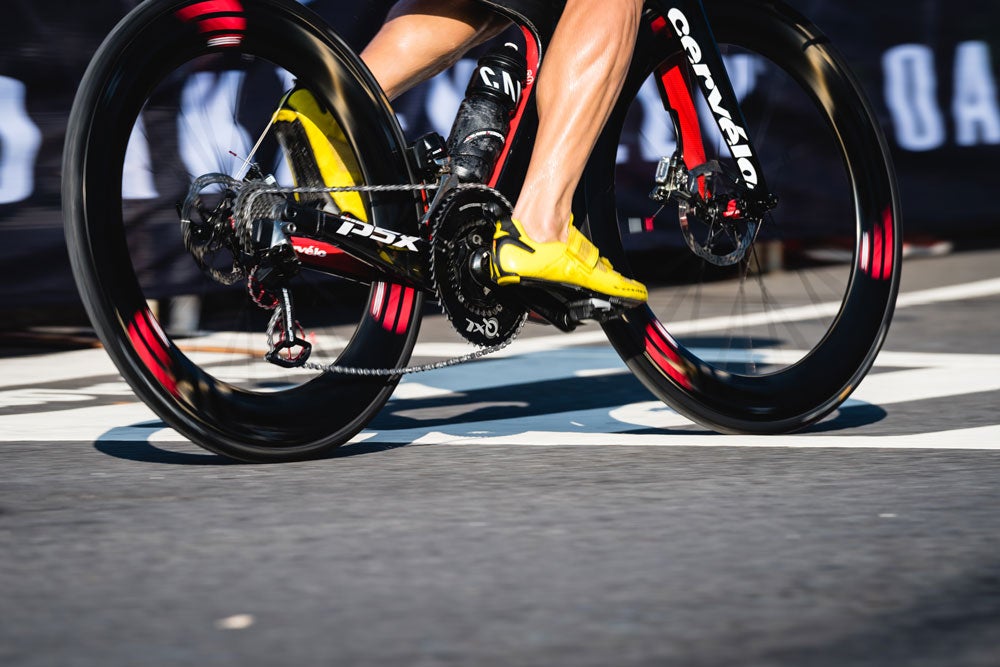Rethinking the Power Hour

Photo: Oliver Baker
Fellow worshipers at The Church of Watts, we’ve been praising a false idol—we should have been polytheistic, not monotheistic this whole time. Let us explain.
Functional threshold power, or FTP, is generally defined as the max power you can produce for one hour. That’s a very different number than the power you can generate for five seconds or one minute. And while you can use formulas to extrapolate out from this one baseline to create targeted training plans, “there’s just too much variation in the population for those numbers to be really accurate,” says Mac Cassin. Cassin is a Boulder-based coach who helped The Sufferfest develop its new “4DP” replacement for the traditional FTP test.
“There’s a difference between aerobic and anaerobic athletes. If you’re a crit racer, you can go really deep for 20 minutes, but if you’re an Ironman athlete, you’re going to do better at a longer, steady state test,” Cassin explains. These differences are both genetic and trained. But when you give both of these athletes the same test and use it to determine how hard they should be training—both for long and short intervals—you’re going to end up with Ironman athletes doing short, hard efforts that are beyond their capacity and crit racers who never get challenged to really “dig.”
While Sufferfest has its proprietary 4DP system, there are DIY options out there, too. Maria Simone, an Absecon, New Jersey-based coach, custom tailors each athlete’s intervals by tempering FTP with his or her peak power pro le chart (which several power-based training platforms provide). “I also give a lot of ‘hardest sustainable effort’ workouts, where an athlete has to go as hard as they can for a certain interval of time. I’m fishing for numbers to see what’s in the tank,” she says. From there, she’s able to adjust the targets for short sprints and longer time trials.
Meanwhile Cassin’s test, is specific but, “it’s really miserable,” he admits: Athletes start with a 12-minute warm-up, then do two 7-second max sprints. From this, a 5-second max watt value is generated. After a rest period, athletes do a 5-minute max test, which measures max aerobic capacity. “It’s like a VO2 max ramp test in a lab,” he explains. Then you get six minutes of recovery, followed by a 20-minute traditional FTP test. Since you’re already fatigued, your average power for this 20 minutes equals your FTP number, there’s no need to take away a percentage, like in many standard FTP tests. Finally, you finish with a 1-minute sprint, because you clearly haven’t suffered enough already. As you wipe the puke off your lower lip, though, you can finally revel in possessing a range of numbers that fine tunes your workouts just for you—no matter your blessings from the FTP god(s).